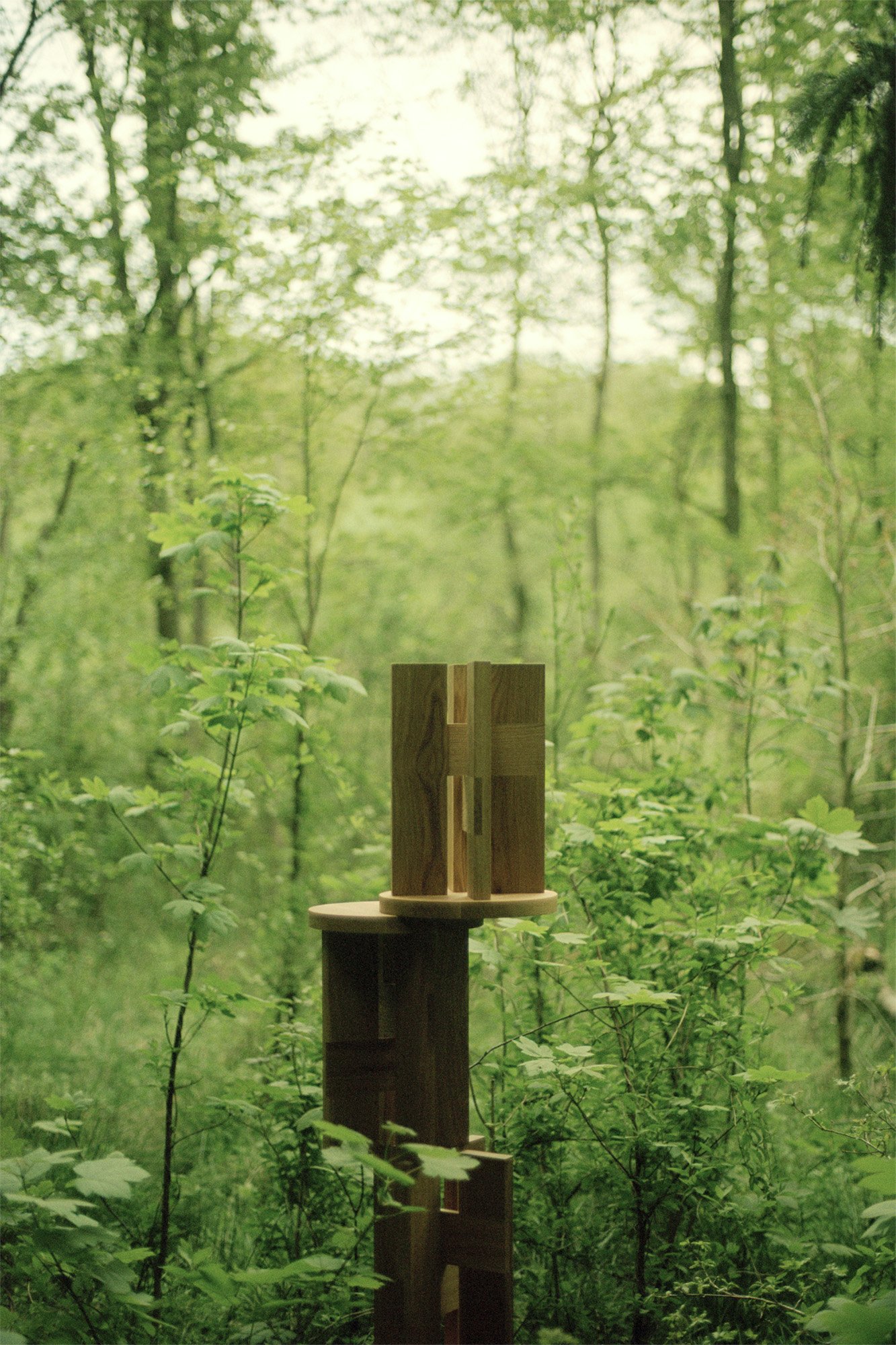An ode to wood
The Mio collection, inspired by a nighttime walk through an untamed forest, features furniture that embodies the natural contrasts and raw simplicity observed during the journey.
Designed with a focus on functionality and minimalism, the collection includes round tables and stools made from oak, reflecting the beauty and essence of nature.
About a year ago, I strolled through the forest with a flashlight on a late, dark evening. The woods were untamed and chaotic, adorned with fallen trees, newly sprouting ones, winding paths, and leaves in every imaginable hue. Maintaining focus proved challenging, yet as I continued walking and cast light with the flashlight, a sense of clarity emerged. Countless fascinating compositions unfolded wherever the light touched. In the treetops, distinctive patterns revealed themselves: trees intertwined next to trees standing in a straight row. This inspiration led me to design furniture pieces that embody my observations of the contrasts found in the forest: a round table resembling a tree trunk with legs that intersect and intertwine. It is dynamic and alive, forming an intriguing and intricate composition.
I've always aspired to design a round table, granting its importance as a focal point in any space. The circle exudes warmth and comfort, akin to a beam of light in the dark. There's an allure in the table that draws me in. Centered around it, a substantial portion of life's pivotal moments unfolds. A round table can fill a space, stand grand and majestic, be there when significant decisions are made, but it can also be a small round stool in the corner. It encompasses a broad spectrum of purposes.
I had an intuitive and almost ingenuous approach to the design process, especially in the way the table legs are assembled. There are no fine joineries, detailed carvings, or complex constructions. You can distinctly see how it is assembled. I draw continuous inspiration from the raw industrial realm, where structures and machines are constructed for enduring functionality rather than the aesthetics. The various elements of the table have a quite direct encounter, which, in its simplicity, seems a bit naive, and I find that beautiful because it is so honest. For me, it's about removing all the unnecessary. It's my fundamental approach to design. Is there a reason for a detail, a pattern, a joint to be there? No. Then it should be removed.
Having previously worked extensively with steel, I had a strong desire to explore wood - an inherently generous material that bestows abundant contributions. It possesses vitality and gracefully matures with the passage of time. A tabletop can easily become a large, substantive surface, but wood brings joy and life with its grain patterns and natural signs of existence. With wood as its foundation, the table contributes to lively and enriching moments.
In the design process, I explored both oak and ash, each encapsulating its unique essence. Oak emanates a brown, warm, and dark aura, while ash exudes a light and almost innocent expression. Both are lively materials, showcasing their grain patterns prominently. Additionally, they stand as robust and sturdy wood varieties, integral to the construction and overall quality of the furniture. Practicality, resource consumption, and recyclability are crucial considerations for me. The furniture must withstand regular use, and the allure of patina is particularly captivating, especially as it unveils the story of the table spanning many years of usage.
I develop my collections with a keen focus on ensuring that my work holds a meaningful place in everyday life, aiming to elevate both people and spaces through impactful design experiences. The same principle guides my choice of materials. The idea of creating the stool for the series arose out of curiosity about how we could minimise material waste. Our producer showed me the amount of waste generated when cutting the pieces of wood needed for the table. I thought, let's use the leftovers and seize the opportunity to utilise almost all the wood when producing a table. The design of the stool mirrors that of the table, just on a smaller scale.
The tables are named 'Mio,' a term derived from Japanese, where it signifies 'thread' or 'beginning.' This encapsulates the idea of Mio delicately weaving threads to the wild essence of the forest.
The collection encompasses a side table & stool and a table in three distinct sizes: a spacious dining table, a slightly smaller counterpart, and a coffee table. Serving as both an addition and an extension to our permanent collection, these pieces pay homage to nature, seeking to capture the very essence of the forest. In this design, the vast sky and the free flow of thoughts and ideas are symbolically encapsulated.
As told to Ditlev Fejerskov
Captured by Jakob Storm







